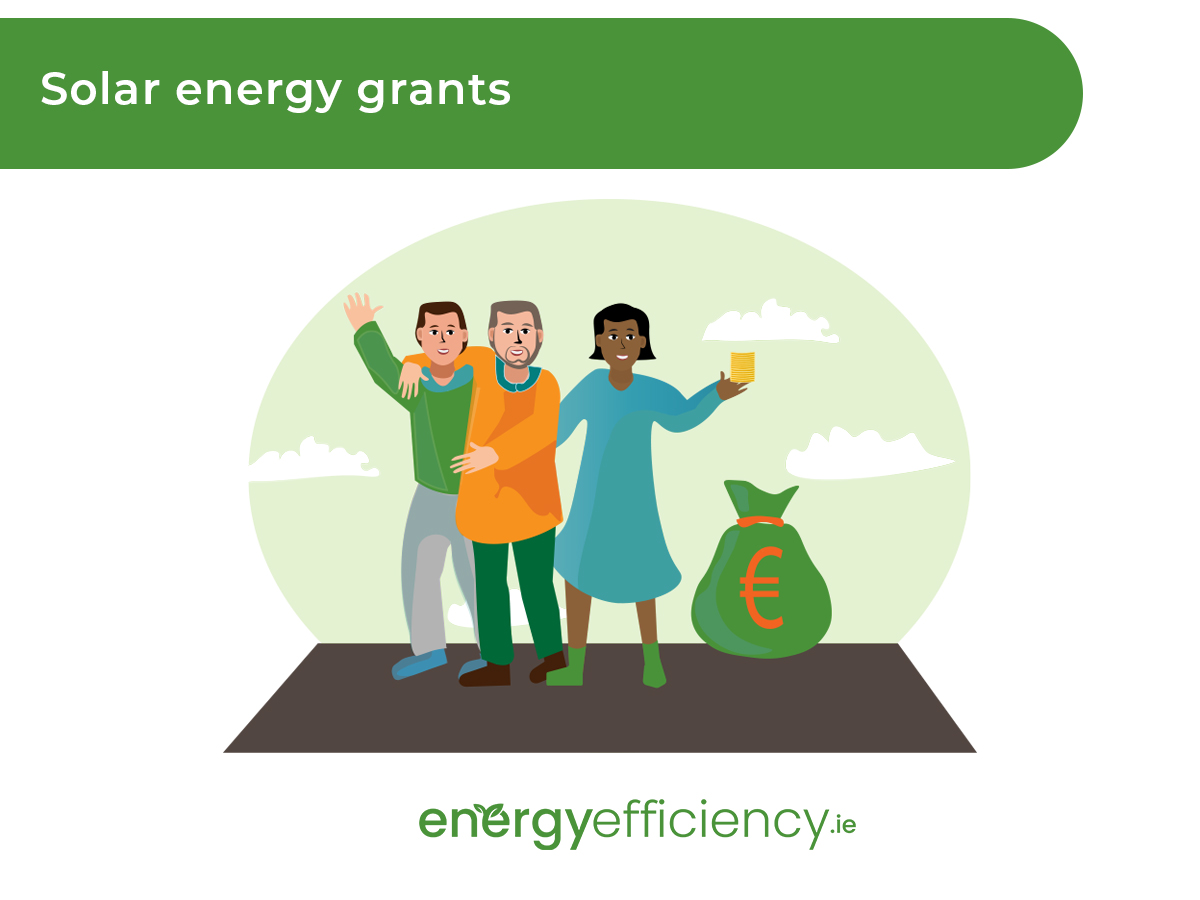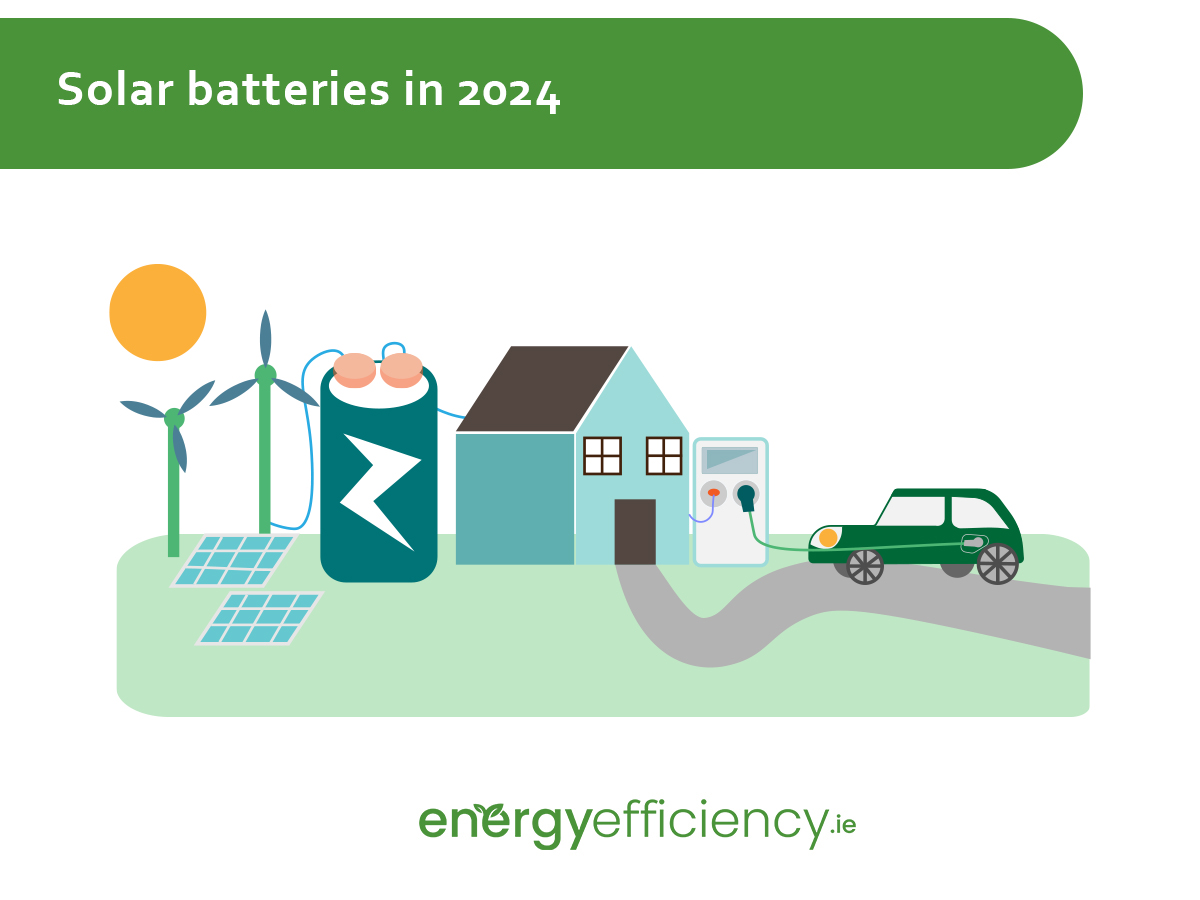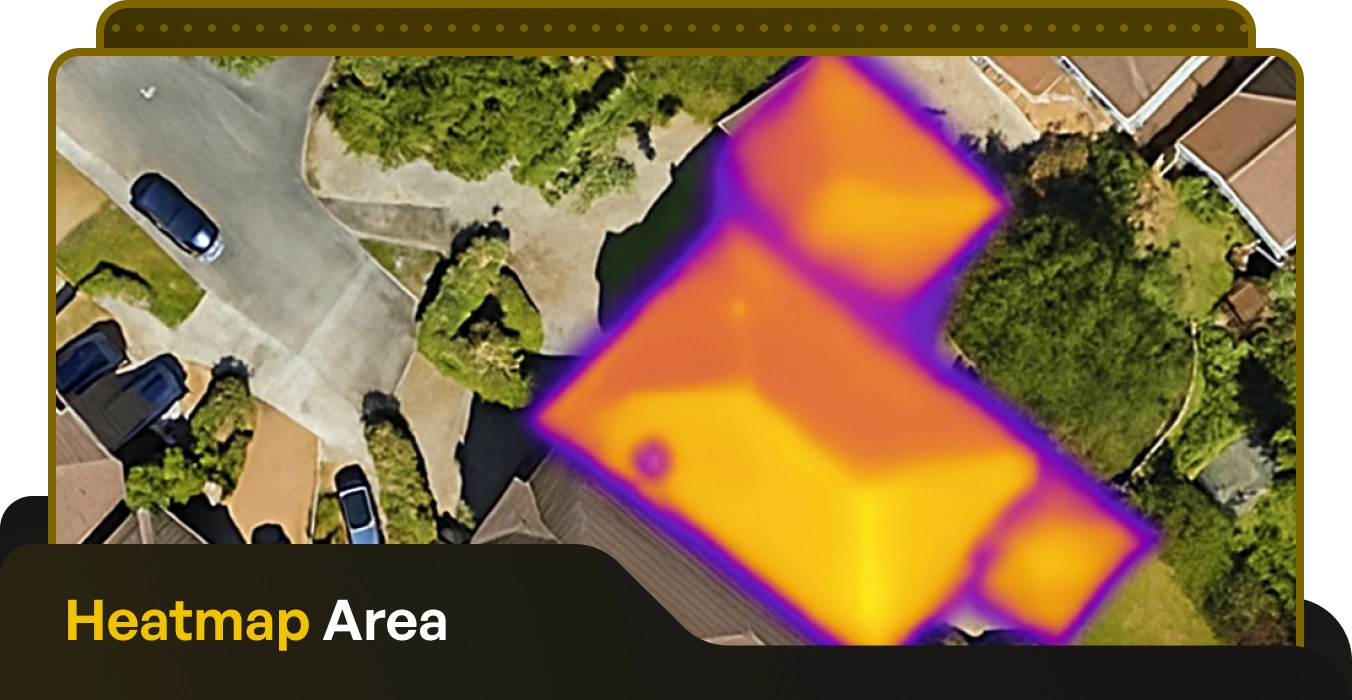The Energy Efficiency 2024 Solar Panel Guide

Written by: Briain Kelly
Published: January 22, 2024
Last updated: October 9, 2025
Reading time: 4 mins
2023 saw soaring demand for solar power in Ireland, both in homes and at a larger utility-scale, as people grappled with high energy prices, and the government introduced ever more support to help people move to renewable energy.
Positive trends have been seen in greater public awareness and adoption of rooftop solar PV as an affordable and accessible way for people to reduce their dependence on the grid and cut their electricity bills.
By the middle of 2023, there were approximately 60,000 homes in Ireland with solar PV installed, and that number increased by nearly a quarter in just the next three months, a positive indication of what we can hope to see in the coming year.
Rising Demand for Home Solar PV
Throughout 2023 there was a massive increase in the number of Solar PV installations carried out compared to the previous year, and interest remains stronger than before headed into 2024.
SEAI data shows that in the first nine months of 2023, there were 14,990 Solar PV installations carried out with the assistance of their grant funding. This represents an increase of 175% on the same period of 2022.
The number of homes and businesses having solar panels installed continued to increase each quarter, with 3,985 by the end of Q1, another 4,926 in Q2, and 6,079 in Q3 ending last September.
Applications for Solar PV grants from the SEAI were also up by 50% year-on-year to the end of Q3 2023, with 18,783 applications made in that period last year compared with 12,470 in 2022.
Within this period we can see the effect of government measures to make rooftop solar more accessible take effect. Within those three quarters, the biggest year-on-year increase in grant applications came in Q2 2023. The 6,771 grant applications for Solar PV received in those three months was 66% higher than the same period in 2022.
This was around the time when VAT on solar panels was slashed to 0%, representing potential average savings of approximately €1,000 per homeowner.
The average cost of a residential solar system in the first nine months of last year was €11,838 with the SEAI paying an average grant of €2,344. With most grants awarded by the SEAI being near the maximum amount payable, it shows that homeowners and businesses were getting substantially sized photovoltaic systems installed.

Future Trends
There are a number of things we can expect to see develop in 2024 and in the years to come which will greatly affect the affordability and viability of solar power for homes and businesses. Drastic changes in the cost of the technologies which make up a solar PV system, and improvements in that same tech will let people get more out of their solar panels.
Falling Solar Panel Prices in 2024
The cost of solar panels has fallen dramatically in recent years, with prices declining by more than 50% in the past decade. As investment continues to pour into the renewable energy sector, there’s good reason to hope that this trend will continue, putting solar power more easily within all homeowners’ reach.
The government is certainly convinced that there will be some sharp cuts in the years to come, as it has already cut the Solar PV grant for householders by €300 from the start of this year to a maximum of €2,100, and has said that it will continue to gradually be reduced in the coming years.
Solar Power Battery Storage
One big area to keep an eye on will be the field of Solar Battery technology. One of the big impediments to solar power adoption is its intermittent nature. The sun doesn’t shine all the time, and the times when it is strongest are also frequently when most people are out of the house, at school or work.
The feed-in tariff offered to households and businesses goes some way towards addressing this. Especially with Budget 2024 doubling the amount of tax-exempt income households can receive from selling electricity back to the grid.
However, the tariff price offered by utilities is roughly half of the average cost of purchasing electricity. This makes it more worthwhile in the long run to store and use that excess electricity at times of greater demand at home and lower output from solar panels.
Home battery storage, while still a pricey addition to any solar PV system, is becoming more widespread. Large batteries can still add up to around €5,000 to the price of an average solar PV system. However, with big companies now putting a lot of money into the sector, those prices will come down the same way that the cost of solar panels has.

Solar Panel Efficiency in 2024
Something which people need to take into account when choosing solar panels is their efficiency rating. Efficiency represents how much of the sunlight hitting the panels is being converted into electricity.
Some of the top solar panels on the market in 2024 from companies such as Jinko and Canadian Solar are now advertising efficiency levels of up to 23% using the latest N-Type TOPcon solar cells.
These are monocrystalline silicon solar panels, which tend to be more pricey than other alternatives. However, it is still a better long-term investment to choose more efficient solar panels over lower-quality modules. Especially since these top-end modules will have better degradation rates for their 25-30-year lifespan. While
Looking to the future there is a lot more which can be extracted from solar panels with the commercialisation of Perovskite Tandem Solar Cells in the next several years, which promises a leap forward in efficiency. Qcells in South Korea is investing $100m in bringing Perovskite Tandem Solar Panels to the market by 2026 after achieving a 29.3% efficiency rate in 2023 with a solar cell developed with Helmholtz Zentrum Berlin. Tandem solar panels are expected to come onto the market with a starting efficiency level of 27%.
Whether the government’s measures will be enough to reach the target of 8GW of solar capacity in Ireland by 2030, the strong public demand and ever-improving technology give reason for positive thought.
Get solar panels in 2024
If you are interested in installing solar panels to your home or business in 2024, speak to Energy Efficiency for the best quotes on the market.
Speak to our experts and find out what grants are available for further savings on your electricity costs in 2024.
Find out today why we are Ireland’s leading experts in all things solar panels.
The Energy Efficiency 2024 Solar Panel Guide
Published: January 22, 2024
Last updated: October 9, 2025

Written by: Briain Kelly
Reading time: 4mins
2023 saw soaring demand for solar power in Ireland, both in homes and at a larger utility-scale, as people grappled with high energy prices, and the government introduced ever more support to help people move to renewable energy.
Positive trends have been seen in greater public awareness and adoption of rooftop solar PV as an affordable and accessible way for people to reduce their dependence on the grid and cut their electricity bills.
By the middle of 2023, there were approximately 60,000 homes in Ireland with solar PV installed, and that number increased by nearly a quarter in just the next three months, a positive indication of what we can hope to see in the coming year.
Rising Demand for Home Solar PV
Throughout 2023 there was a massive increase in the number of Solar PV installations carried out compared to the previous year, and interest remains stronger than before headed into 2024.
SEAI data shows that in the first nine months of 2023, there were 14,990 Solar PV installations carried out with the assistance of their grant funding. This represents an increase of 175% on the same period of 2022.
The number of homes and businesses having solar panels installed continued to increase each quarter, with 3,985 by the end of Q1, another 4,926 in Q2, and 6,079 in Q3 ending last September.
Applications for Solar PV grants from the SEAI were also up by 50% year-on-year to the end of Q3 2023, with 18,783 applications made in that period last year compared with 12,470 in 2022.
Within this period we can see the effect of government measures to make rooftop solar more accessible take effect. Within those three quarters, the biggest year-on-year increase in grant applications came in Q2 2023. The 6,771 grant applications for Solar PV received in those three months was 66% higher than the same period in 2022.
This was around the time when VAT on solar panels was slashed to 0%, representing potential average savings of approximately €1,000 per homeowner.
The average cost of a residential solar system in the first nine months of last year was €11,838 with the SEAI paying an average grant of €2,344. With most grants awarded by the SEAI being near the maximum amount payable, it shows that homeowners and businesses were getting substantially sized photovoltaic systems installed.

Future Trends
There are a number of things we can expect to see develop in 2024 and in the years to come which will greatly affect the affordability and viability of solar power for homes and businesses. Drastic changes in the cost of the technologies which make up a solar PV system, and improvements in that same tech will let people get more out of their solar panels.
Falling Solar Panel Prices in 2024
The cost of solar panels has fallen dramatically in recent years, with prices declining by more than 50% in the past decade. As investment continues to pour into the renewable energy sector, there’s good reason to hope that this trend will continue, putting solar power more easily within all homeowners’ reach.
The government is certainly convinced that there will be some sharp cuts in the years to come, as it has already cut the Solar PV grant for householders by €300 from the start of this year to a maximum of €2,100, and has said that it will continue to gradually be reduced in the coming years.
Solar Power Battery Storage
One big area to keep an eye on will be the field of Solar Battery technology. One of the big impediments to solar power adoption is its intermittent nature. The sun doesn’t shine all the time, and the times when it is strongest are also frequently when most people are out of the house, at school or work.
The feed-in tariff offered to households and businesses goes some way towards addressing this. Especially with Budget 2024 doubling the amount of tax-exempt income households can receive from selling electricity back to the grid.
However, the tariff price offered by utilities is roughly half of the average cost of purchasing electricity. This makes it more worthwhile in the long run to store and use that excess electricity at times of greater demand at home and lower output from solar panels.
Home battery storage, while still a pricey addition to any solar PV system, is becoming more widespread. Large batteries can still add up to around €5,000 to the price of an average solar PV system. However, with big companies now putting a lot of money into the sector, those prices will come down the same way that the cost of solar panels has.

Solar Panel Efficiency in 2024
Something which people need to take into account when choosing solar panels is their efficiency rating. Efficiency represents how much of the sunlight hitting the panels is being converted into electricity.
Some of the top solar panels on the market in 2024 from companies such as Jinko and Canadian Solar are now advertising efficiency levels of up to 23% using the latest N-Type TOPcon solar cells.
These are monocrystalline silicon solar panels, which tend to be more pricey than other alternatives. However, it is still a better long-term investment to choose more efficient solar panels over lower-quality modules. Especially since these top-end modules will have better degradation rates for their 25-30-year lifespan. While
Looking to the future there is a lot more which can be extracted from solar panels with the commercialisation of Perovskite Tandem Solar Cells in the next several years, which promises a leap forward in efficiency. Qcells in South Korea is investing $100m in bringing Perovskite Tandem Solar Panels to the market by 2026 after achieving a 29.3% efficiency rate in 2023 with a solar cell developed with Helmholtz Zentrum Berlin. Tandem solar panels are expected to come onto the market with a starting efficiency level of 27%.
Whether the government’s measures will be enough to reach the target of 8GW of solar capacity in Ireland by 2030, the strong public demand and ever-improving technology give reason for positive thought.
Get solar panels in 2024
If you are interested in installing solar panels to your home or business in 2024, speak to Energy Efficiency for the best quotes on the market.
Speak to our experts and find out what grants are available for further savings on your electricity costs in 2024.
Find out today why we are Ireland’s leading experts in all things solar panels.
Solar Energy Saves Households Thousands in Electricity Costs
Take our 2-minute questionnaire and find affordable solar options to suit your budget and lifestyle.



